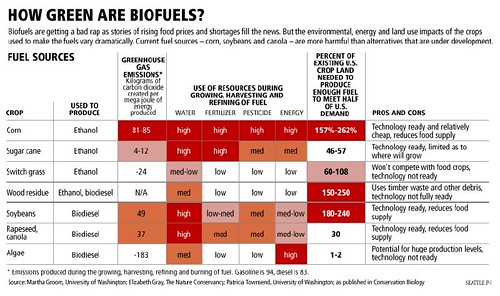Webinar Alert: NEXT GENERATION 9-1-1 (NG 9-1-1) SUMMIT FOR LARGE CITIES
Please join us for the upcoming Talking Technology and Transportation (T3) Webinar:
Next Generation 9-1-1 (NG 9-1-1) Summit for Large Cities
Date: May 21, 2009
Time: 10:30–11:30 A.M. ET
Cost: All T3s are free of charge
Register On-line
Contact the T3 Administrator
Description
Advances in telecommunications mobility and convergence have put the nation’s 9-1-1 emergency call system at a crossroads. The growing market penetration of both cellular and Voice-over-Internet-Protocol (VoIP) telephony, and the increasingly mobile world they reflect, has underscored the limitations of the current 9-1-1 infrastructure. Today’s 9-1-1 system, based on decades-old technology, cannot handle the text, data, images, and video that are increasingly common in personal communications and critical to future transportation safety and mobility advances.

There is consensus within the 9-1-1 community on the need for a new, more capable system surrounding emergency call delivery and response (ultimately a system of systems). There is general agreement on the need to capitalize on advances in information and communications technologies, and develop systems that will enable:
- Quicker and more accurate information delivery to responders;
- Better and more useful forms of information (real-time text, images, video, and other data);
- More flexible, secure and robust Public Safety Answering Point (PSAP) operations; and
- Lower public capital and operating costs for emergency communication services.
The US DOT’s Next Generation 9-1-1 (NG 9-1-1) Initiative has helped define and document a vision for the future of 9-1-1. The NG 9-1-1 Initiative is a research and development project to define the system architecture and develop a transition plan that considers responsibilities, costs, schedule and benefits for deploying IP-based emergency services across the nation.
USDOT views the NG 9-1-1 project as a transition enabler, to assist the public in making a 9-1-1 call from any wired, wireless, or IP-based device, and allow the emergency responders to take advantage of enhanced call delivery, multimedia data and advanced call transfer capabilities. To accomplish these goals, the ideas and needs of both public and private 9-1-1 stakeholders have been incorporated.
This webinar will provide a briefing on the status of the NG 9-1-1 Initiative and other development efforts and describe the transition to the National E-911 Implementation Coordination Office that is currently underway.
Audience
This summit targets 9-1-1 stakeholders, public safety communications professionals and other interested parties in the future planning of the nation’s emergency call centers.
Learning Outcomes
- What is NG 9-1-1?
- What is the current status of NG 9-1-1 implementation?
- What steps is USDOT taking toward developing the future of 9-1-1?
- What information about NG 9-1-1 is available?
Federal Hosts:
Linda Dodge and Laurie Flaherty, NG 9-1-1 Co-Program Managers, US DOT
Linda Dodge
Linda Dodge has overall 30 years in public safety (firefighter, paramedic, heavy rescue) in the field and administration. Linda’s experience includes instructing at the Maryland Fire Rescue Institute (MFRI), University of MD; a director of a police and correctional officer academy, for the Maryland Dept. of Public Safety – Police and Corrections; 12 years as executive director Colorado Trauma Institute, Denver, CO and the last 10 years at the DOT ~6 of the10 years as regional program manager NHTSA Region 8, in Lakewood and 4 years ITS JPO, FHWA, in DC public safety program manager (NG 9-1-1, WE 9-1-1, Emergency Transportation Operations, etc.)
Laurie Flaherty
Laurie Flaherty is an emergency nurse, who has more than 20 years of clinical experience. She received her bachelor’s degree in nursing at Marquette University, and has a master’s degree in emergency and trauma nursing from the University of California, San Francisco.
Laurie is a Program Analyst in the Office of EMS at NHTSA and focuses on issues related to the application of technology in Emergency Medical Services and 9-1-1 services. She currently co-manages the Next Generation 9-1-1 Initiative for the Office of EMS, and is also directly involved in establishing and staffing the National 9-1-1 Office.
Presenters:
John Chiaramonte, Booz Allen Hamilton
John Chiaramonte, an Associate at Booz Allen Hamilton, is the deputy program manager leading the NG 9-1-1 Initiative for the US DOT. In 2008, he successfully managed a team of software developers and technical and functional experts that implemented a proof of concept demonstration.
Prior to joining Booz Allen, John was a Senior Project Manager delivering public safety applications to 9-1-1 centers. He has been involved with public safety IT projects both as the end-user and a vendor and throughout the entire implementation process. He is a subject matter expert on Computer Aided Dispatch (CAD) and 9-1-1 systems and operations and is a certified Project Management Professional (PMP).
Reference in this webinar to any specific commercial products, processes, or services, or the use of any trade, firm or corporation name is for the information and convenience of the public, and does not constitute endorsement, recommendation, or favoring by U.S. Department of Transportation.Please forward this announcement to colleagues who may be interested in attending this webinar.
————————————————————————————————————————————————–
- T3 Webinars are brought to you by the ITS Professional Capacity Building, a program of the U.S. DOT’s ITS Program. Visit the ITS PCB website for more information about T3 webinars and other ITS learning opportunities: http://www.pcb.its.dot.gov/default.asp
- Visit the T3 archives to view presentations and to listen to audio transcripts from previous T3 webinars: http://www.pcb.its.dot.gov/res_t3_archive.asp
- Cut and paste links into your web browser if they fail to open the webpage.
————————————————————————————————————————————————-
Important Information for Federal T3 Webinar Participants
Federal Desktop Core Configuration (FDCC) requirements are currently being implemented in federal agencies. Please contact your IT staff to determine if these requirements affect your ability to connect to T3 webinars via Microsoft Live Meeting from your federal PC or laptop. This link contains information about Live Meeting and can be provided to your IT staff for further reference: http://www.pcb.its.dot.gov/t3/info_requirements.asp










